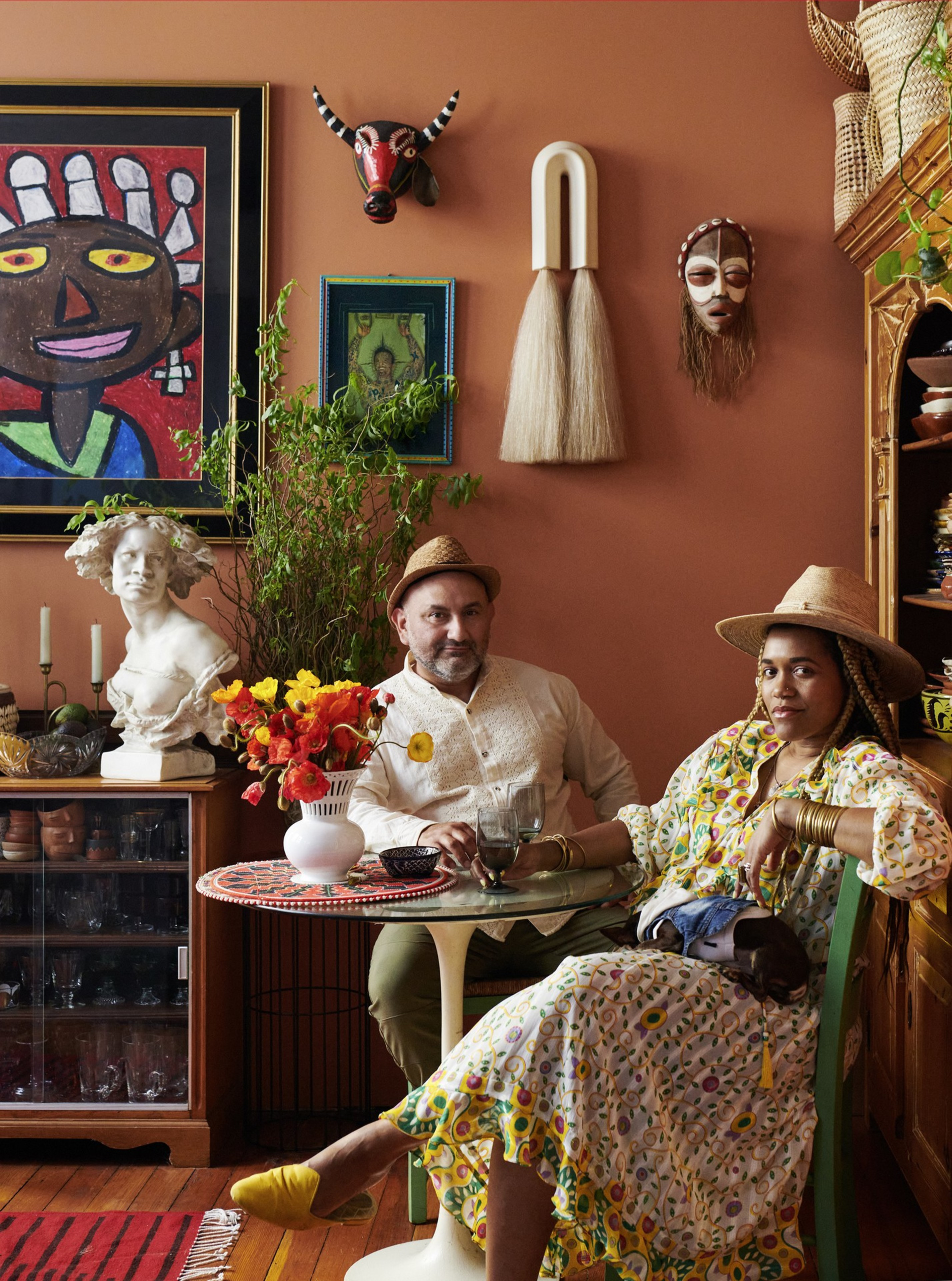This is The Looker, a column about design and style from San Francisco Standard editor-at-large Erin Feher.
Jillian Knox sees what others overlook. She once found an authentic Brazilian cowhide rug in a trash can at a Muni stop. She spotted a portrait of Oprah Winfrey by the outsider artist Vincent Jackson in a garage in the Castro. She even scored a dream apartment—and a husband—on Craigslist.
Knox, an in-demand prop artist and food and wardrobe stylist (opens in new tab), has been scouring estate sales, flea markets, online marketplaces, artists’ studios and, yes, curbside trash piles for decades. Her senses are finely tuned to the diamonds hidden in the detritus.
The Mission District apartment she shares with her husband Elvis Santoyo is both filled with those treasures and a gem in its own right: Long hallways, soaring coved ceilings, oversized windows, a sunny roof deck and enough bedrooms to turn a spare into a walk-in closet that would make most tiny-city-home-dwellers squeal.

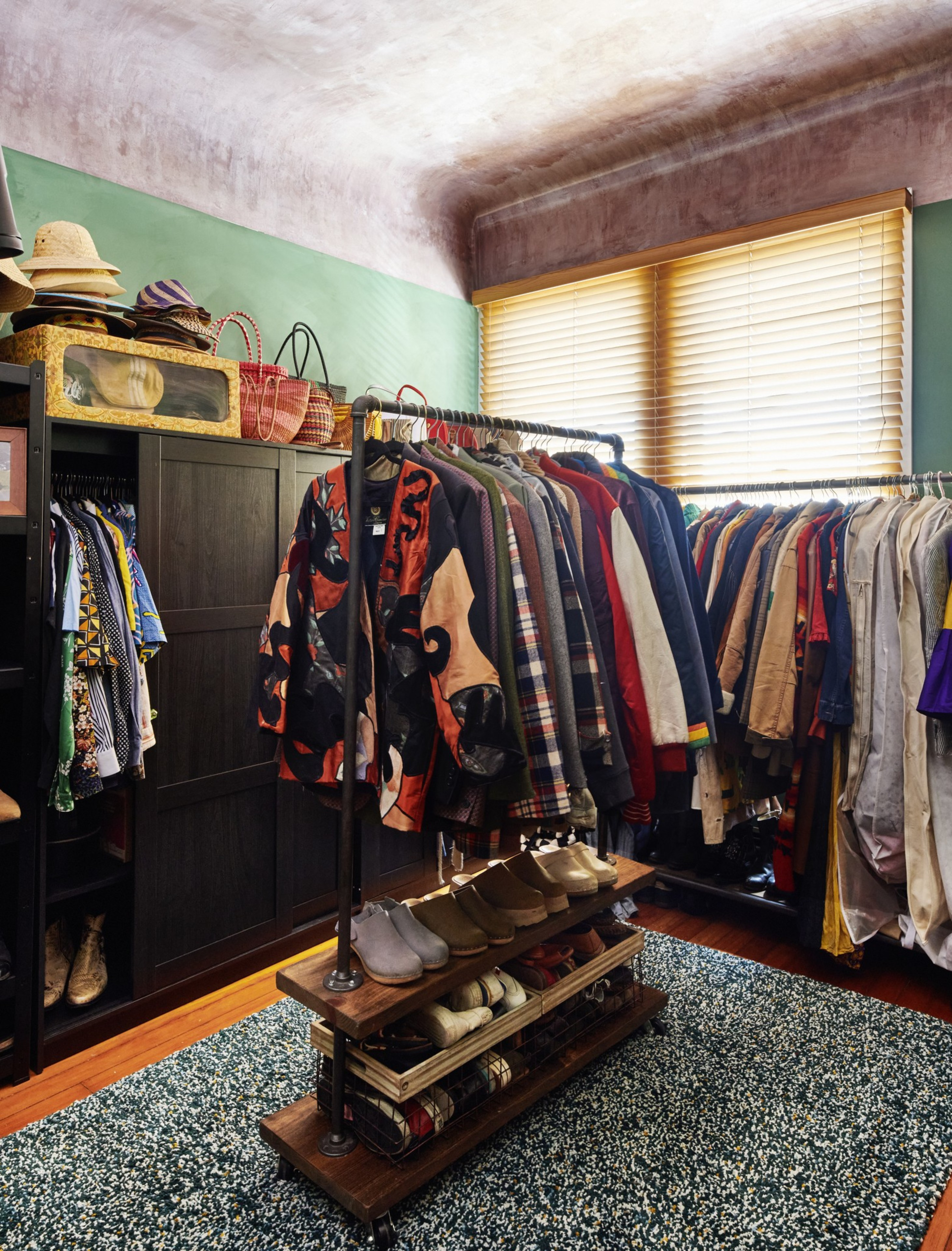

The walls are an inspired collage of plants, taxidermy, textiles and art, much of it made by people of color, or featuring faces and themes reflecting Knox and Santoyo’s Mexican, African and Caribbean heritages. “I think it’s helpful for us to see ourselves in our space,” says Knox.
Nearly every shelf and surface is stacked high with records and well-loved books, many of which Knox helped create. Her styling credits include work on cookbooks “Eat Something: A Wise Sons Cookbook for Jews Who Like Food and Food Lovers Who Like Jews (opens in new tab),” “Black Food: Stories, Art, and Recipes from Across the African Diaspora (opens in new tab),” “Anything’s Pastable (opens in new tab),” the James Beard Award-winning “Diasporican (opens in new tab),” and many more.
Knox and Santoyo’s home represents the blurry—yet always brightly colored—line between passion and profession. The couple owns Casa Ojo (opens in new tab), an online shop featuring housewares and textiles created in partnership with artisans from Oaxaca, Mexico. Santoyo’s parents immigrated from Mexico to Texas before eventually settling in Chicago, where he grew up as one of six kids. He and Jillian make the trip back multiple times a year, forging connections with local artisans.
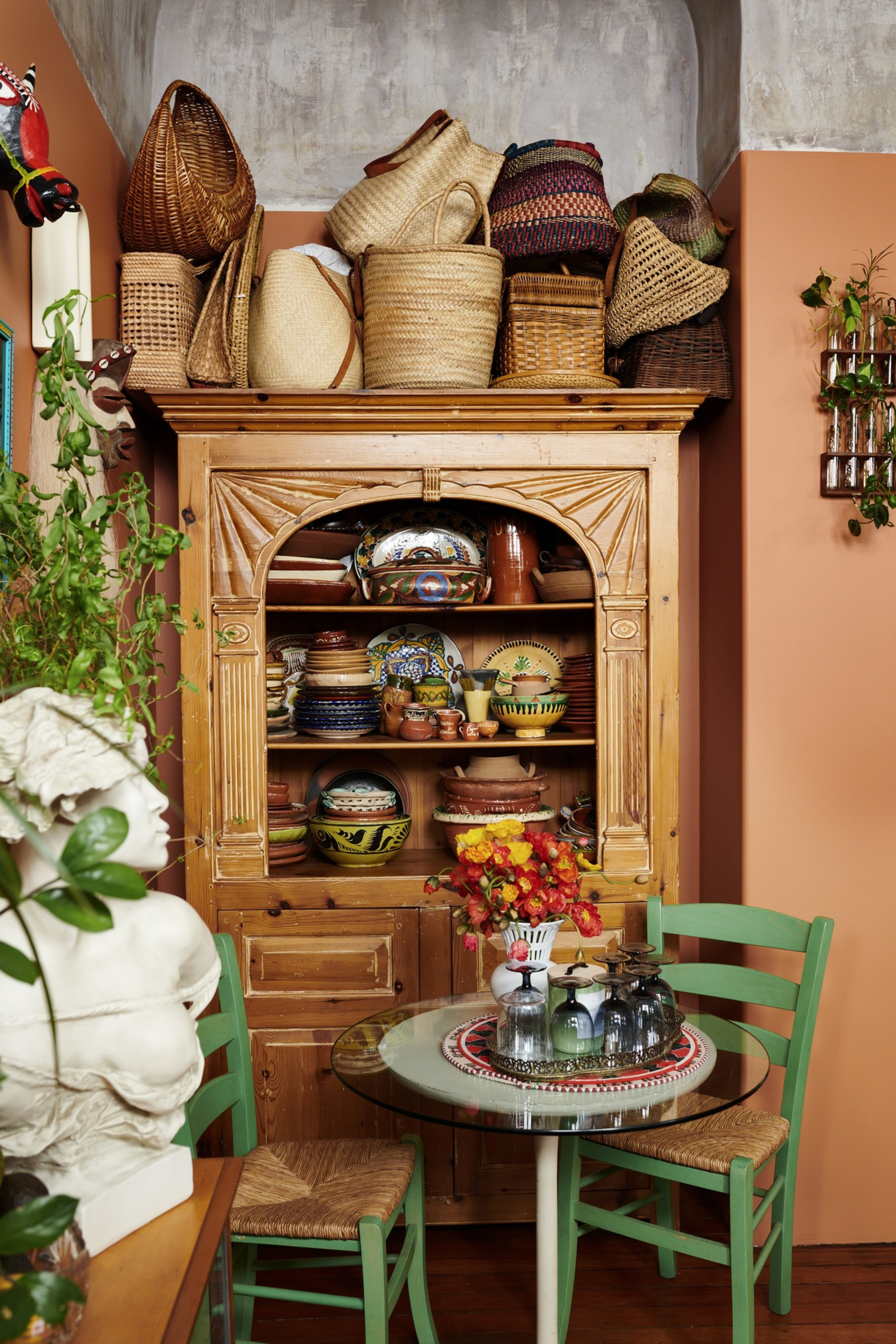

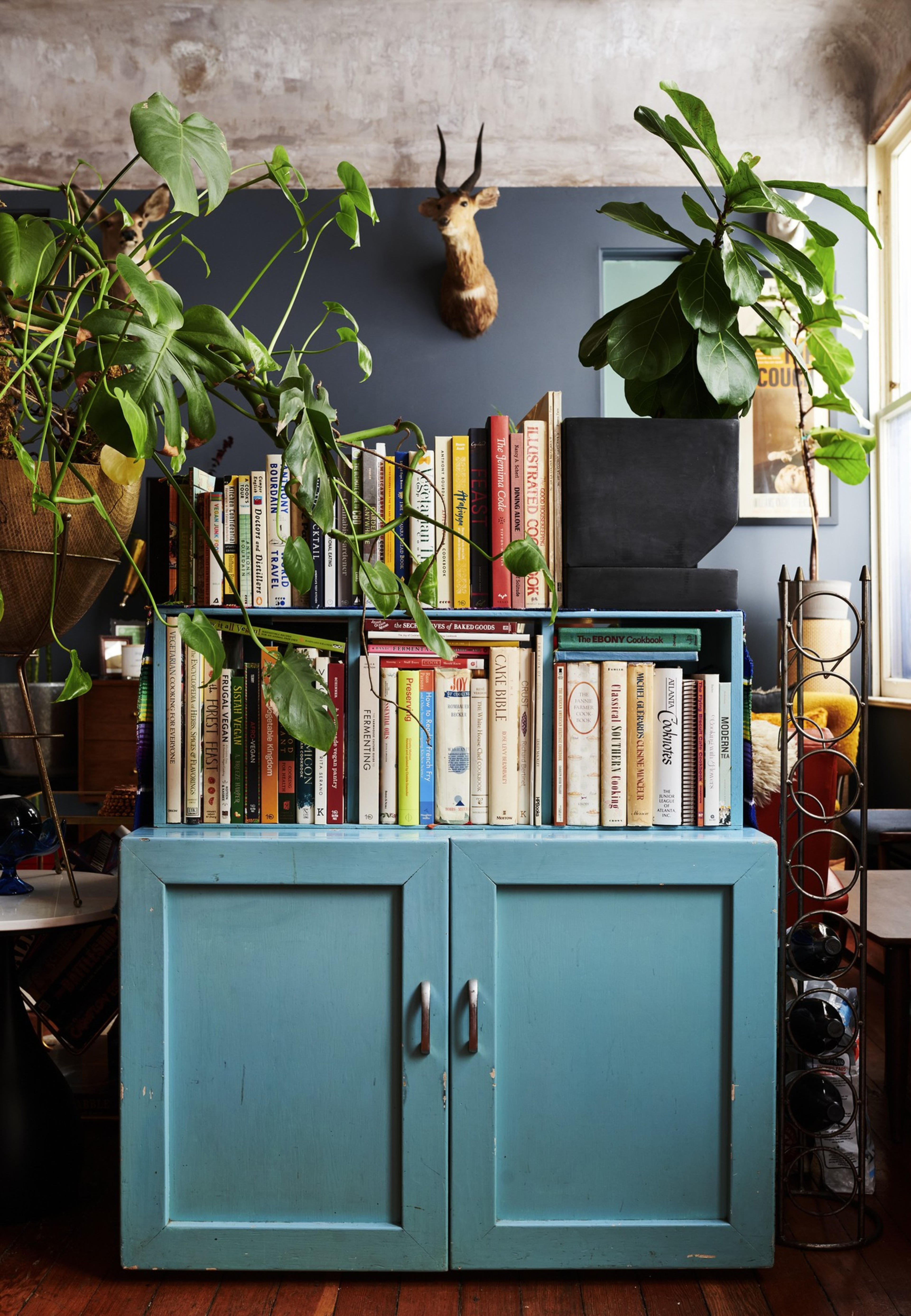
Their home itself speaks to their ability to find beautiful things with beguiling backstories. Five years ago, the couple was crammed into an 850-square-foot apartment in Noe Valley, bursting at the seams from Knox’s prop collection and merchandise from Casa Ojo. When rental prices dropped during the pandemic, they thought they’d try their luck and score some extra square footage elsewhere. Knox had spotted a listing on Craigslist, which specified artist applicants were preferred. Yet when they walked through the door for the open showing, “it was just a sea of Northface jackets,” says Knox.
“The two of us are dressed like this,” she says, gesturing to her bell-bottomed denim jumpsuit and wrists stacked high with jangling gold bangles. Santoyo was wearing his customary Guayabera, petite fedora and calfskin boots. “Our landlords saw us and they’re like, ‘Who are you? How did you find this place? Are you artists?’ We interviewed outside right then.”
They hit it off immediately with their future landlords, and were invited back to meet the neighbors and building co-owners: a woodworker and a sculptor. Once they passed the community vibe check, the apartment was theirs.
They have spent the last four years making it home. Nearly every piece of furniture or accessory comes with a history. The professional-grade display cabinets were being abandoned by the San Francisco Masonic Auditorium. They bought a midcentury burlwood slab, later made into a coffee table, from a longtime Castro resident and AIDS activist who was being evicted from his apartment. They collect screenprints from a favorite punk rock flea market (opens in new tab) in Mexico City. One extra-wide work of Mexican art resulted in a missed flight when the airline refused to check it—Knox recalls a mad dash around a Mexican airport trying to find a sympathetic gate agent with a soft spot for art.



There’s even an altar to keep a resident ghost in check. “We call him Peekaboo,” says Santoyo. “It’s just like a little head that peeks his head around the corner. When we first moved in, he would open the kitchen cabinets…The pets were freaked and would not go past the hallway unless we were there.” The couple built the altar and did a ceremony to make nice with Peekaboo. “We just said, ‘Hey, listen, we’re not here to take over your space. We can live together. Just don’t try to do anything weird. Let us be and we’ll let you be.’” There’s been relative peace ever since.
The adjacent wall is home to a vignette of some of the couple’s most treasured objects. A figurative Oprah portrait is a large-scale oil pastel by the prolific Creativity Explored artist Vincent Jackson dating from the ’80s. Below it sits a plaster replica of “The Negress,” a 17th-century bronze sculpture by French artist Jean-Baptiste Carpeaux, that the couple found at an estate sale. The sculptor created the piece three years after the American Civil War to emphasize the horrors of slavery.
The bust gazes upon a perfectly patinated pine display hutch that Knox nabbed on Facebook Marketplace for $20. It’s filled with earthenware from around the world, colorful plates and cups from Central and South America, stoneware tagines from the Middle East and terracotta vessels from flea markets near and far. It’s topped with a curated cluster of straw bags.
Which brings us to Knox’s biggest score—Santoyo himself. In true Knox style, she didn’t find him the way most people match up with a romantic partner online. In 2008, she had just graduated from the Savannah College of Art and Design and knew she didn’t want to head back home to D.C. She was curious about Chicago, so she planned to spend her Spring Break there and posted on Craigslist looking for a tour guide to show her around for a day. Santoyo answered the call.


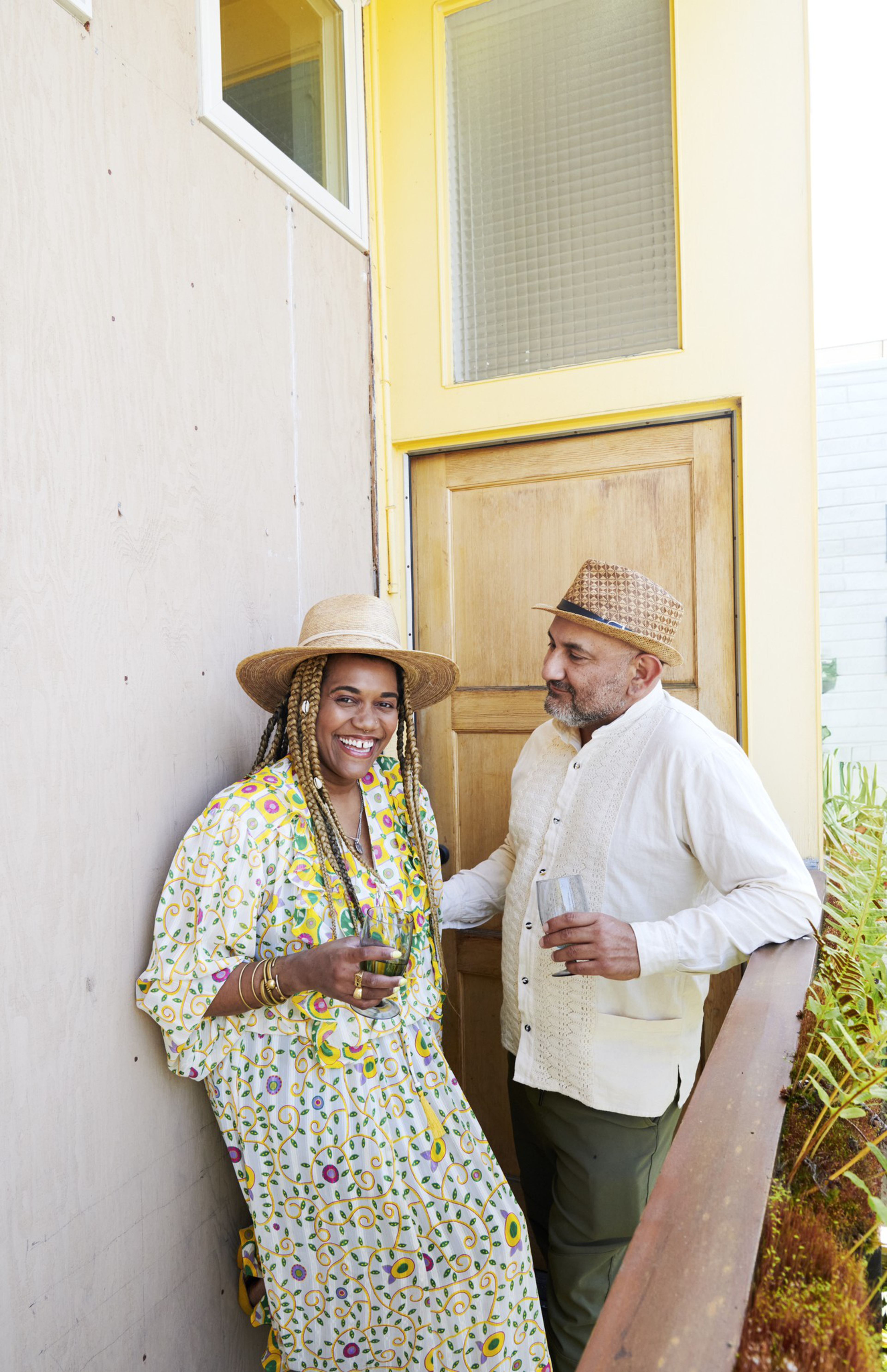
“I literally cleared my schedule and showed her all my favorite places,” says Santoyo, who arrived at their first meet-up at a pizza joint wearing a suit. While Knox always knows a keeper when she sees it, Santoyo’s instincts aren’t too shabby either.
“I knew she was the one when she reached across the table, grabbed my pizza that I was eating and was like, ‘I’m gonna have a slice.’ I think she ate half my pizza. The rest is history.”
This story was produced in partnership with Represent Collaborative (opens in new tab), a non-profit media initiative producing stories about Black and brown communities.
